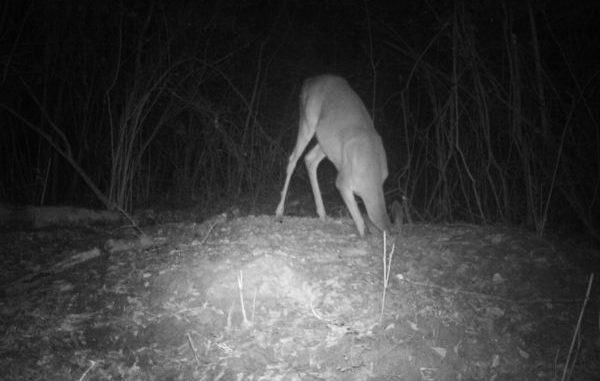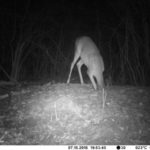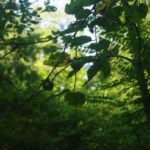
Hunting season is upon us
While the first shots are being fired at early migratory game birds, there is a lot of work to do before serious deer hunting begins.
Hopefully, you have not been putting off the work that needs to be done prior to the start of another deer season, and have been pacing yourself throughout the hot summer days and only have to do a few things prior to Oct. 1.
However, if you are the typical deer hunter, you have been spending all your time fishing, playing golf or whatever, and have not been to the deer woods since the 2014 season ended.
I remember a hunter telling me one time about him going to his deer stand in late August to see what needed to be done and finding that the woods around it had been clear-cut.
Hopefully you are better off than this fellow.
There is a lot of work to be done. Shooting bows, making sure rifles are sighted in, checking deer stands to ensure they are safe (i.e., cleaning out the wasp nests), working the roads and trails on the property, and — no doubt the big chore for most hunters — getting the feeders and food plots ready.
With respect to the feeders, if you have an oak component on your hunting property, you might want to spend a few days with your binoculars in September looking at the crowns of oak trees for acorns. I was seeing another good acorn crop developing on the oak branches that were knocked down during the summer months.
If the growing conditions permitted these acorns to mature, we might be looking at a repeat of last year: lots of acorns in the woods that will keep the deer away from feeders and food plots.
This could be a way to also save you some money, since you can hunt the acorns and spend less on corn for the feeders.
On our small property, there is a persimmon crop this year. So bowhunters might want to spend time in September looking for the trees that have this fruit.
French mulberry shrubs in the piney woods also have fruit, and this would be another food source to hunt come October.
I suspect most of you will make food plots. The green strip I planted with clover and chickory last fall was still producing forage as of late July. The spring and summer rains have kept these plants green and growing.
Chickory is an excellent forage and produces a large root that has been ground up and used in coffee.
I will not do anything to this strip right now, but I will clip it in mid-October and then top-dress it with some more clover and chickory seed, apply some fertilizer and hopefully produce another good stand of winter forage.
The primary benefit from a clover/chickory mix comes in the spring, when the deer need high-quality nutrition for body growth and antler development.
I planted joint-vetch in several large strips during the early summer, and the deer are feeding heavily in them. I will leave these alone for now, since vetch will continue to grow until first frost.
Hopefully I might be able to connect with a deer feeding through these strips during October.
In late October, I will probably clip them and top-dress with some winter wheat.
I also planted strips with millet, peas and beans, as well as some strips with millet, sunflowers and sorghum. I will clip some of these for the dove season and plant them back with wheat, clover and turnips.
Some of the strips I will leave standing for ground cover for turkeys and quail, and will not do anything to them until February.
I normally plant purple hull peas and green beans in the strips, and am able to pick peas and beans for the freezer — but this year the deer worked them over pretty good.
I am a firm believer in using a variety of plant species in a food plot. Clovers, chickory and winter wheat are mainstays of my fall plantings.
White clovers, crimson clover, arrow-leaf clover and ball clover work well together mixed with chickory, winter wheat or oats.
I always let the winter grass seed out in the spring because these grasses attract a variety of songbirds (including indigo buntings and blue grosbeaks), as well as providing seed for turkeys and quail.
If you do not have the time and equipment to work the ground, cutting the grass and top-seeding with rye grass will work and attract deer. It is important to fertilize it and, once the seed germinates, come back in a few weeks with some nitrate to improve forage quality.
I will do this a lot of times with crimson clover, and it works great. I like the looks of a field in the spring with the red clover, and the turkeys and quail like it also.
Legumes such as clover add nitrogen to the soil as it grows, so this is one benefit of incorporating legumes into your plantings.
If you established or reworked your mineral sites back in the spring, as you should have, you do not need to worry about them now. The use of minerals by deer greatly declines in the fall.
I reworked a mineral site on our property using granular trace mineral salt and a trophy rock. There is a hole about a foot deep in the ground where the trophy rock was located. Deer were coming to the site and sticking their heads into the hole to eat the mineral soil.
Next spring I will probably fill the hole up and drop another trophy rock on it.
I have been busy this summer cutting privet and other vegetation overhanging the edges of my food plots and trails. I use gas pruners and weed-eaters with pruning head attachments for this work.
It is some hard work for this old man, but I do not like to spray herbicides to kill vegetation. There is a lot of elderberry and poke salad growing on the edges of my fields — and both provide excellent browse for deer and also produce fruit for the deer and other wildlife species.
Deer will also eat the privet as it resprouts. Privet is a good deer forage, but it has a tendency to grow fast and out of the reach of deer.
If you had plans to do some tree planting this winter, you might not know that the Louisiana Office of Forestry has done away with their tree sales program, so now we have to go to private growers to get the tree stock we want to plant.
But now is the time to be making plans and finding growers who have the tree species you are interested in planting.
There have been a few changes in the hunting rules and regulations and season dates, so by all means get a copy of the 2015-16 Rules and Regulations Pamplet, and make sure you are hunting legally.
With the excellent mast crop we experienced last year and the outstanding growing conditions during the spring and summer months, I am anticipating a good harvest of quality deer this season — and perhaps some real trophies.
Who knows? We just might be looking at a photo of you and your bruiser in an issue of Louisiana Sportsman over the next few months.




